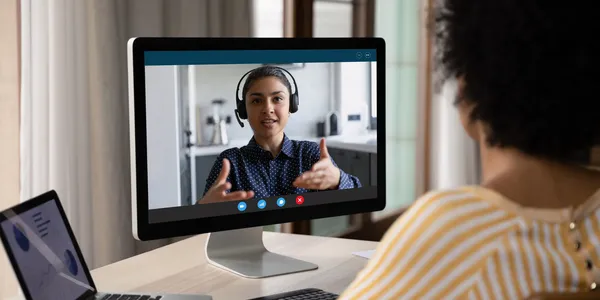Understanding the Power of Live Sales Coaching
Live sales coaching is transforming how organizations develop their salespeople. Unlike traditional training programs that rely on pre-recorded modules or theoretical lessons, live coaching happens in real time—often during actual sales calls or meetings. It gives immediate feedback that helps sales professionals make quick adjustments and learn from real interactions. This method bridges the gap between knowledge and execution by allowing coaches to intervene when it matters most. In a fast-changing sales environment where customer expectations evolve daily, live coaching offers the agility that static training cannot. It empowers sales teams to learn dynamically, stay responsive, and enhance their performance continuously. As more companies compete for customer attention, live sales coaching becomes not just an option but a necessity for maintaining a competitive edge.
How Live Sales Coaching Works
Live sales coaching is designed to provide real-time mentorship and actionable insights during sales activities. A typical session involves a coach observing a live call, virtual meeting, or face-to-face client interaction. The coach offers feedback as the conversation unfolds or immediately after it ends, helping the salesperson correct tone, timing, or technique instantly. Technology plays a major role in facilitating this process—tools like Zoom, Gong, or Chorus allow coaches to join remotely and review sales conversations with precision. By using these platforms, organizations can analyze call recordings, track engagement, and identify patterns that highlight both strengths and weaknesses. The beauty of live sales coaching lies in its immediacy—it accelerates learning by transforming every client interaction into a real-world lesson. Sales professionals no longer have to wait for post-training sessions to improve; they gain valuable insights on the spot, turning theory into consistent practice.
Key Benefits of Live Sales Coaching for Teams and Organizations
Live sales coaching delivers measurable advantages that traditional training programs struggle to match. The first and most obvious benefit is immediate feedback. Instead of waiting days or weeks to address performance issues, coaches can correct them during the moment of action. This allows sales professionals to adapt quickly and strengthen their approach. Teams also report higher confidence levels as live guidance eliminates the guesswork often associated with sales conversations. It creates a culture of accountability and continuous improvement, which boosts morale and motivation. Moreover, live coaching improves the customer experience by helping salespeople engage more naturally and effectively with prospects. Clients sense genuine interaction when sales representatives are confident and well-guided.
Some of the most impactful benefits include:
- Real-time feedback that sharpens sales performance instantly
- Increased motivation and engagement from personalized coaching
- Improved client relationships through authentic communication
- Enhanced ROI on training programs due to immediate skill application
- Stronger alignment between individual goals and company objectives
Through consistent live coaching, organizations witness faster ramp-up times for new hires and reduced turnover rates, as employees feel supported and equipped to succeed.
Essential Skills Developed Through Live Sales Coaching
Live sales coaching enhances a wide range of essential skills that directly impact sales outcomes. One of the core competencies it builds is active listening, allowing sales professionals to fully understand a client’s needs before offering solutions. Coaches guide sales reps in recognizing subtle verbal cues and emotional tones that indicate buying signals or hesitations. Another vital skill is objection handling. In a live coaching session, coaches can demonstrate or suggest responses to real objections, helping reps stay composed and persuasive. Communication and storytelling also improve, as coaches emphasize crafting compelling narratives that connect emotionally with clients.
Here are some of the top skills that live coaching refines:
- Active listening and empathy-driven selling
- Handling objections confidently and effectively
- Persuasive communication through storytelling
- Adaptability to different buyer personalities
- Emotional intelligence and situational awareness
By reinforcing these abilities in real time, sales professionals become more agile and capable of adjusting to unpredictable sales dynamics, ensuring that each conversation moves closer to closing a deal.
Tools and Platforms That Enable Live Sales Coaching
Technology is at the heart of live sales coaching, making it possible to observe, analyze, and enhance performance across various sales environments. Popular platforms such as Zoom, Gong, Chorus, and SalesLoft have built-in tools for real-time call monitoring and analytics. These platforms allow sales leaders to listen in, provide discreet guidance, and review recorded sessions for later analysis. Integration with CRM systems like Salesforce or HubSpot ensures that coaching insights align directly with performance data. Artificial intelligence further enhances this process by identifying behavioral patterns, keyword trends, and engagement levels.
Modern tools that support live coaching often include:
- Real-time call analytics and feedback dashboards
- AI-driven performance tracking and reporting
- Integration with CRM systems for holistic performance management
- Video and audio recording for detailed post-session analysis
With the right technology stack, organizations can scale their coaching programs efficiently while maintaining personalized guidance for every salesperson.
Building a Culture of Continuous Learning with Live Sales Coaching
The most successful sales organizations treat live coaching as a culture, not just a program. It thrives in environments that value openness, collaboration, and growth. Sales leaders play a key role in fostering this culture by encouraging ongoing feedback and creating opportunities for shared learning. When team members view coaching as a supportive rather than punitive process, they become more receptive to feedback. Live coaching sessions also promote peer learning—sales reps can observe each other’s sessions and share techniques that work.
To build this culture effectively:
- Encourage open dialogue between coaches and sales professionals
- Recognize improvements publicly to reinforce positive behavior
- Set measurable goals and track progress consistently
- Provide safe spaces for trial, error, and learning
A strong learning culture ensures that live coaching translates into long-term growth, turning sales teams into confident and high-performing professionals.
Common Challenges in Live Sales Coaching and How to Overcome Them
Despite its benefits, implementing live sales coaching can present challenges. One common issue is scheduling, especially for teams operating across different time zones. This can be managed by using flexible digital tools and setting consistent coaching windows. Another challenge is performance anxiety—some sales reps feel nervous being observed in real time. Coaches must address this by building trust and emphasizing that coaching is meant for growth, not evaluation. Consistency is another hurdle; different coaches may have varying feedback methods. Standardizing coaching guidelines helps maintain fairness and effectiveness.
To overcome these obstacles, organizations should:
- Use reliable scheduling and collaboration platforms
- Train coaches on empathy and constructive feedback
- Set uniform metrics to track improvement objectively
- Offer continuous support rather than one-off sessions
When managed thoughtfully, these challenges become opportunities for team strengthening and professional development.
Implementing Live Sales Coaching in Your Organization
Introducing live sales coaching requires careful planning and communication. It begins with aligning leadership and defining clear goals for what the program aims to achieve—whether it’s improving conversion rates, reducing call hesitations, or increasing average deal sizes. Sales teams should be briefed about how live coaching works and reassured that it’s designed to help, not monitor. Selecting the right coaches is also crucial; they must possess both technical sales expertise and interpersonal skills. Implementation involves gradual integration—starting with pilot sessions before scaling across departments.
To make implementation successful:
- Identify measurable objectives before launching the program
- Select skilled coaches who align with company values
- Gather regular feedback from sales teams to refine processes
- Celebrate milestones to build enthusiasm and momentum
With clear structure and communication, live sales coaching becomes a powerful driver of continuous improvement and performance excellence.
The Future of Live Sales Coaching
The future of live sales coaching is increasingly intertwined with technology. Artificial intelligence and machine learning are enabling more personalized and predictive coaching experiences. These tools can assess tone, sentiment, and engagement in real time, providing deeper insights for both coaches and trainees. Virtual reality (VR) is also emerging as a way to simulate complex sales situations, allowing professionals to practice in immersive, risk-free environments. As buyer behavior continues to evolve, adaptability will become even more critical. Live coaching ensures that sales teams stay sharp, agile, and aligned with modern consumer expectations. Organizations that invest early in these technologies and methodologies will set themselves apart as industry leaders in sales performance innovation.
Frequently Asked Questions (FAQ)
- How often should live sales coaching sessions be conducted?
Ideally, sessions should occur weekly or bi-weekly to maintain momentum and reinforce learning without overwhelming sales reps. - Can live sales coaching benefit both new and experienced professionals?
Yes. New hires gain hands-on guidance, while seasoned salespeople benefit from performance fine-tuning and updated strategies. - What tools are best for remote live sales coaching?
Platforms like Zoom, Gong, Chorus, and SalesLoft are excellent for real-time coaching and analytics. - How long before measurable improvement appears?
Teams often notice performance boosts within one to three months, depending on consistency and engagement levels. - Is live sales coaching expensive compared to traditional training?
While initial costs may be higher, the ROI is significantly greater due to faster learning and better retention.
Takeaway
Live sales coaching isn’t just a modern approach to training—it’s a catalyst for transformation. By combining human guidance with advanced technology, organizations can cultivate agile, confident, and customer-focused sales teams. It encourages real-time learning, nurtures authentic communication, and turns every sales moment into a growth opportunity. For leaders seeking to elevate their team’s performance and future-proof their sales strategy, embracing live sales coaching is the smartest move forward.








